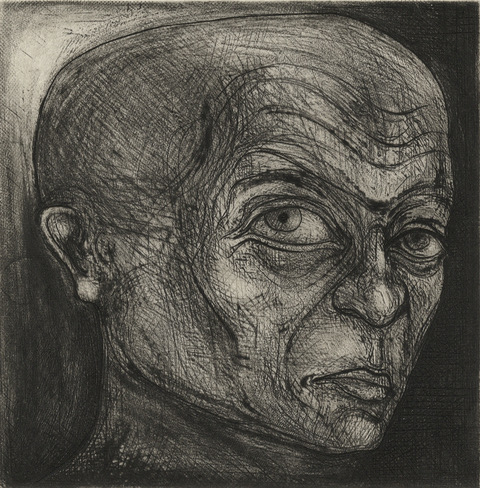etching, drypoint, engraving
1995
4 3/4 x 4 3/4
edition: 24
signed in pencil
The print has an embossed chop in the lower right corner, a capital P in a circle indicating that it was printed by Pratt Contemporary Art, Kent, England.
The shock of displacement was the driving force in Seyed Edalatpour's early work, he found the act of building on a shifting sand a bewildering experience. As a result he framed his practice as research-driven and project-based. The first instance was "Geographical Transformation" in 1987, which became a journey of discovery, gave birth to the idea of self-contained and informed him of the possibility of a path ahead. He then investigated the structure of such possibility in "Self-functional Architecture" where, by the process of de-construction and re-construction, he examined the cultural mechanism in the act of making. "Cannons of Gods", "Zekr", "Farsh", "Twelve and the 13th", " 99names of Gods", "Square" and "Cheheltan" were further studies where Edalatpour sought to strengthen the foundation of his practice. Since 2010, Edalatpour has been working predominantly with wood as a choice material, and examining the condition of man in his current post-existentialist status. In "Circus", Edalatpour's deep affection for man becomes apparent and indeed it is clear that such arrival is the result of his pervious quests but the man he portrays in "Circus" is far from the ancient gods he so admired, he is caught in between inevitabilities.



